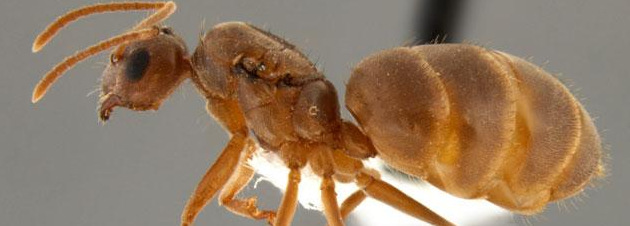If you find waterfowl descending upon your property twice a year, you are not alone. There are thousands of multifamily properties just like you that are unfortunate enough to rest along waterfowl flyways. You are not alone. We are here to help. Unless you’re a hunter, you probably didn’t notice the release of the 2015 Waterfowl Breeding Population and Habitat Survey. What you will want to know—and would probably figure out sooner than later—is that waterfowl are about to take over your world. The survey revealed that the estimated duck population in the US is 49.5 million. That’s 43 percent above the long-term average. For multifamily properties within the waterfowl migration path, that means that you will have an increase in residents between now and November. They will not give you rent money. Instead, they will block traffic each day with their adorable duck parades. They will ruin your residents’ picnics, chasing them for even the tiniest morsel of bread. (Those are likely spoiled harbor birds from New England. They can’t help themselves.) They will leave so much poop throughout your property that you will pray for more dogs. Each morning they will quack, quack, quack until you pull your hair out from the roots. What’s worse, residents and their kids may try to befriend the waterfowl. They may even try to pet them and swim with them. This can lead to the transfer of nasty parasites. You don’t have to be a victim of the pending waterfowl invasion. Take these measures to make their stay more bearable and maybe keep them from visiting altogether. Don’t feed the ducks or geese. As you may notice, pampered, entitled geese are the most insufferable geese. Secondly, human food is terribly unhealthy for waterfowl. Bread and crackers...
Tawny Crazy Ants
Newest property pest
Just as the bed bugs craziness fades from the media, a new pest is working its way through the nation. Tawny crazy ants have caused more than $146.5 million in property damage in the state of Texas alone. And they’re spreading. Nylanderia fulva, simply called the crazy ant, is a tawny-colored, hairy critter that’s about 2mm long. Some males have wings (but the merciful Mother Nature has at least prevented them from flying). Unlike most ants that move with a calculated sense of purpose, crazy ants move erratically. They enjoy the warm, humid climates of the Gulf Coast and have been spotted on properties in Florida, Mississippi, Louisiana, and Texas. Crazy ants do not pose the traditional threats. Their bite may leave an itchy red spot but they don’t have a stinger and will rarely cause an allergic reaction. They do not swarm when their mound is interrupted because they don’t form mounds. That’s the beginning of the problem. Rather than building an easily visible mound, crazy ants love settling into nooks and crannies. They don’t stick to the rocks and trees outside. The like to enter crawl spaces, cabinetry, car engines, potted plants, pipes, and even hide out in electrical equipment—and therein begins the costly property damage. The crazy ants seek the cozy warmth of electrical boxes. Invariably, one of them will be electrocuted by a hot wire. Rather than just dying peacefully, the corpse releases pheromones that summon all of the ant’s family, friends and neighbors to come avenge its death. If the ant had been attacked by an enemy, the battle cry would be worthwhile, helping to protect the group and the queen. But since the enemy is a live wire, the carnage continues, which often causes short circuits and damage. In other cases, crazy ants can cause damage simply by their numbers. They congregate in groups so tight that they resemble dirt (left). The massive clustering of their little bodies can cause congestion in pipes or cause electrical components to overheat. In the long term, the presence of crazy ants can lead to ecological problems. If your property prided itself on the lovely birds and butterflies in your gardens, you may be seeing fewer of those flying beauties. Crazy ants can eliminate entire fire ant colonies—which is excellent according to popular opinion—but they also eradicate other arthropods and small insects like spiders, centipedes and caterpillars. Animals that feast on tiny insects will lose their food source and have to seek it elsewhere. Inconveniently, birds don’t eat crazy ants. Researchers at Sam Houston University are working to create an eradication plan but have yet to release a definitive solution. Using current methods, a pest control specialist can issue three or four treatments of Termidor SC or Phantom Termicide/Insecticide over several months to keep the critters under control. But crazy ants are resistant to most commercial treatments. And even if one community is destroyed, another will likely form. Colonies tend to have multiple queens, so they rebuild quickly. To minimize damage to your property, consider a few best practices: Stay on top of your landscaping After spring storms, promptly clear fallen leaves and limbs to minimizing crazy ants’ favorite outdoor hideouts. Improve drainage Crazy ants breed quickly in moist areas. Leaky exterior pipes should be fixes. It’s also a good idea to improve drainage throughout the property; if there are areas of the landscape that tend to pool, consider creating a rain garden that will control moisture. Minimize moisture inside the building Tawny Crazy ants enjoy tight spaces with moisture. Aim to keep basements and crawl spaces dry. In the humid southeast, it may be helpful to use dehumidifiers throughout the building. Remove food sources Crazy ants eat like any other ant. They are particularly drawn to sugary substances. Hummingbird feeders and birdbaths are like buffets to crazy ants. Find ant deterrent models or drain them, leaving...


